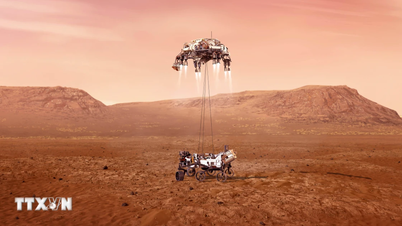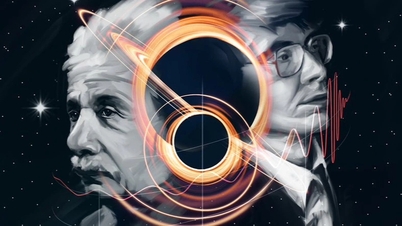Outstanding performance and operating mechanism
According to AS , Russia has just announced a new plasma engine prototype, promising to shorten the travel time from Earth to Mars to only 30 to 60 days, instead of 6-9 months as it is now.
This technology, if proven and applied, could become a turning point in the history of space exploration .
Unlike chemical rockets, plasma engines do not burn fuel to create thrust. Instead, the system uses electromagnetic fields to accelerate charged particles such as protons and electrons.

Russia is developing a plasma engine (Photo: AS).
Hydrogen ions are accelerated to 100 km/s, equivalent to about 360,000 km/h, many times faster than the maximum speed of about 4.5 km/s of most current chemical rockets.
This principle allows charged particles to reach exceptionally high speeds, maintaining continuous thrust instead of just during the start-up phase, said Alexei Voronov from the Troitsk Institute.
That would significantly shorten flight times and reduce the risk of exposure to space radiation, a major hazard of months-long manned missions.
The prototype was tested in a 14m long, 4m wide vacuum chamber, simulating space conditions. The engine operated in pulse-cyclic mode at 300kW. The current operating life is about 2,400 hours, enough for the designed Earth-Mars round trip.
Why is hydrogen chosen as fuel?
Scientists chose hydrogen as a fuel because it is the lightest and most abundant element in the universe. Hydrogen allows for high speeds with minimal consumption and does not require extremely high plasma temperatures, reducing thermal stress on components and extending engine life.
6N of thrust may sound small, but it's high for a plasma engine that prioritizes fuel efficiency over instantaneous thrust. The power to run the engine could be provided by an onboard nuclear reactor.
The space-ready version is expected to launch in 2030. The engine will be used after the spacecraft reaches orbit, serving as a supplement to interplanetary travel rather than replacing ground-launched vehicles.
Challenges ahead
Worldwide , plasma propulsion technology has been applied in NASA's OneWeb satellites and Psyche probe, achieving particle escape speeds of 10 to 50 km/s.
The new Russian engine, if properly tuned, could double that figure. Similar projects, like the VASIMR engine developed by NASA and Ad Astra, have also aimed to reduce the flight time to Mars to about 39 days, but have been severely limited by their power supply.
Russia’s claims have not yet been independently evaluated in scientific journals, and their integration into a full-fledged mission remains to be seen. However, the fact that the prototype has undergone successful testing suggests that the project has a practical technical basis.
If deployed on schedule, this technology will not only help humans significantly shorten the journey to Mars, but also pave the way for faster, safer interplanetary flights with reduced risks for astronauts.
Source: https://dantri.com.vn/khoa-hoc/nga-phat-trien-dong-co-plasma-ky-vong-bay-den-sao-hoa-trong-30-ngay-20250809083000796.htm


![[Photo] Prime Minister Pham Minh Chinh chairs the Government's online conference with localities](https://vphoto.vietnam.vn/thumb/1200x675/vietnam/resource/IMAGE/2025/10/5/264793cfb4404c63a701d235ff43e1bd)




![[Photo] Opening of the 13th Conference of the 13th Party Central Committee](https://vphoto.vietnam.vn/thumb/1200x675/vietnam/resource/IMAGE/2025/10/6/d4b269e6c4b64696af775925cb608560)

























![[Photo] Prime Minister Pham Minh Chinh launched a peak emulation campaign to achieve achievements in celebration of the 14th National Party Congress](https://vphoto.vietnam.vn/thumb/1200x675/vietnam/resource/IMAGE/2025/10/5/8869ec5cdbc740f58fbf2ae73f065076)




































































Comment (0)